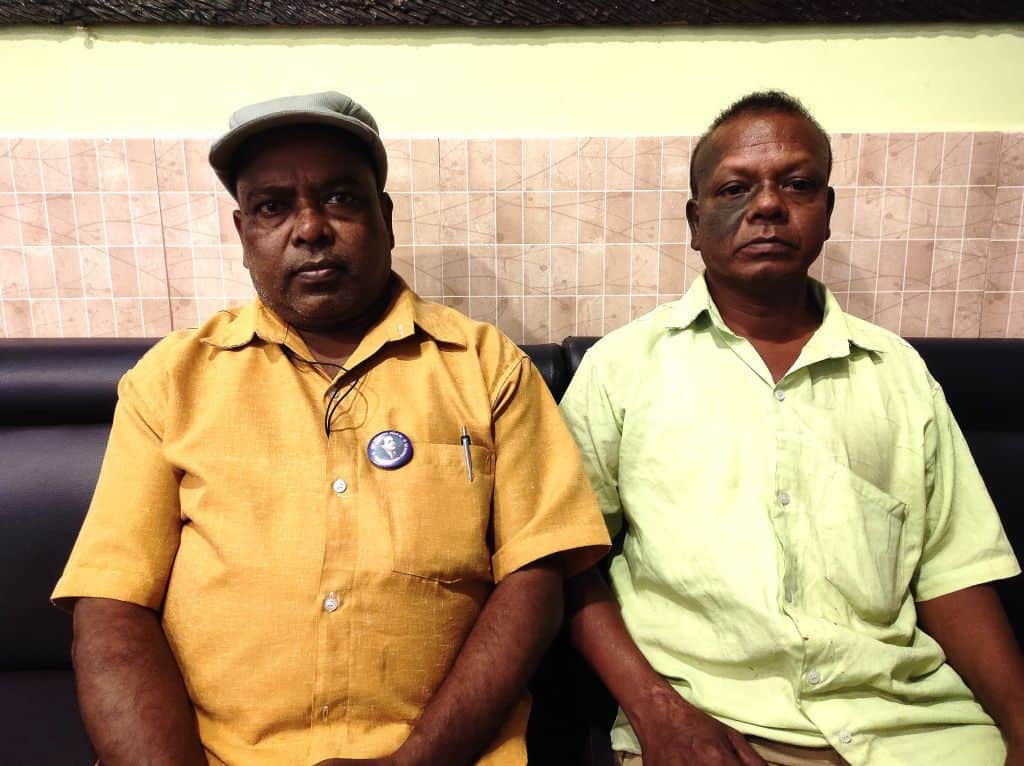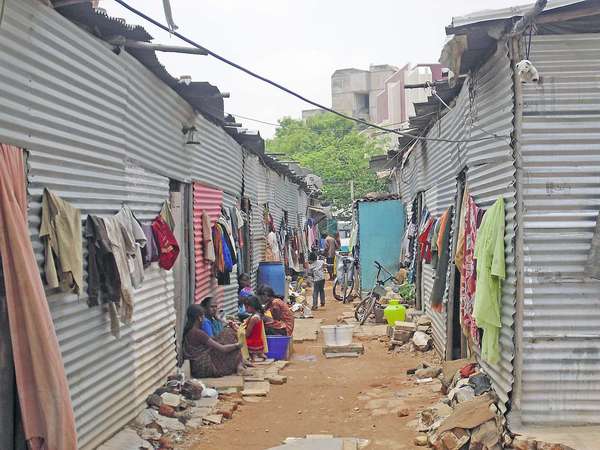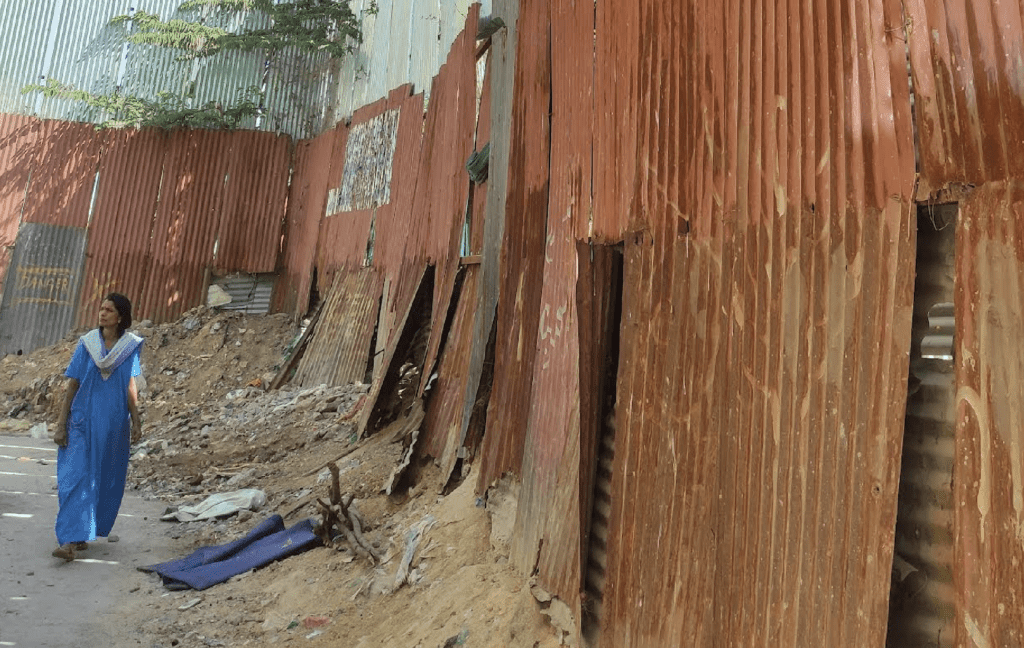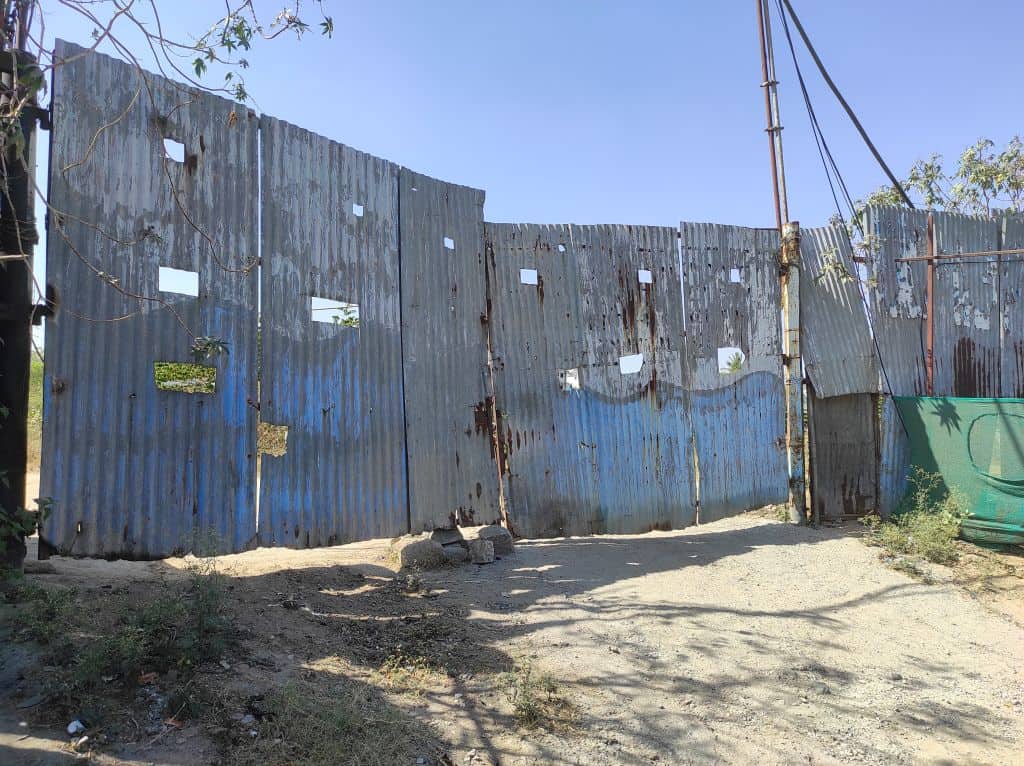N Krishna remembers it was precisely 4.49 pm on November 9th, 2003, when the block next to his government-allotted flat in Ejipura collapsed. It was just moments ago that Krishna had been inside the block, built for the economically weaker sections (EWS) in the 1990s, along with a photographer and BBMP engineer whom he had invited to inspect the damaged building.
“People outside saw the block collapsing and shouted at us to come out, so we escaped,” he said. (Some residents have lost their lives in similar collapses.)
Krishna and his family had happily moved into the newly built EWS quarters in Ejipura when it was allotted to him. But when parts of the structures started collapsing after a few years, fearing for his and family’s safety especially after his near escape from death, Krishna and many others decided to leave.
“My children were small then, and it was risky during rains,” he says. Since then he has stayed in rented homes in different parts of the city, even as he kept requesting BBMP officials to allot him new quarters. Krishna now lives in Kodihalli near Old Airport Road and works at a courier office in Shanthinagar.
M Sampangi, another original allottee, has also been living in a rented home for years now. He earns Rs 4,000-5,000 per month as a cobbler (he earned nothing during COVID lockdowns), which makes rent hard to afford.

According to the BBMP, lease-cum-sale agreements were executed for 1,512 original allottees in the Ejipura quarters, who had to pay between Rs 49,000 and Rs 52,000 in instalments. Krishna says some allottees had paid the entire amount despite the extremely poor quality of construction and the lack of basic facilities like water and sewerage.
BBMP built tin sheds on the site as alternative accommodation for those whose quarters had collapsed. But most original allottees rented them out. Krishna says the original allottees are now scattered all over and even outside the city.
In 2012, BBMP entered into a PPP (Public-Private Partnership) with Maverick Holdings and Investments Pvt Ltd to build new quarters for these families. Maverick Holdings is headed by Uday Garudachar, who is also the BJP MLA from Chickpet. A decade later, not even 10% of the construction is completed.
“We only want court orders to be implemented”
In 2008, when two of the original allottees filed a case in High Court on the delay in reconstruction, the court ordered BBMP to get funds for this sanctioned from the government as early as possible. But instead of building the quarters themselves, BBMP entered into the agreement with Maverick in 2012.
As per the agreement, of the 15.64 acres of land, Maverick should build EWS quarters in eight acres, with the remaining 7.64 acres split between Maverick and BBMP for commercial use. Maverick had to finish construction within two years of getting the plan sanction from BBMP.
Read more: Ill-planned, demolished, being rebuilt: saga of Ejipura EWS quarters
At the time the agreement was being finalised, the HC was hearing yet another petition by some allottees regarding delayed construction. Though the PPP starkly reduced the land available for reconstruction of EWS quarters, allottees agreed to it hoping they would get new quarters soon. In 2012, the court ordered BBMP to allot flats as per the agreement with Maverick. It also ordered BBMP to evict and temporarily rehabilitate original allottees from the site by October 2012, so that construction could start.
But this order did not address the plight of the tenants who had rented the tin sheds from the original allottees. Very few originally allottees were living at the site at that time, and the tenants comprised the majority of residents. Nearly 5,000 tenants were evicted in January 2013, without any alternative accommodation or financial help. But despite the forced evictions ostensibly to speed up construction of the EWS quarters, the original allottees have as yet not benefited from this.

In 2016, another bunch of original allottees who had banded together as the EWS Residential Welfare Association, filed a contempt petition in HC on the delayed construction. When Maverick refused to pay BBMP the project’s plan sanction fee of Rs 7.5 crore, the HC ordered Maverick to pay half this amount for the time being. It also ordered BBMP to approve the plan. With this, Maverick started construction in 2017. Maverick also gave an undertaking in court that the construction would be completed within 18 months of getting plan sanction.
Krishna is perplexed why neither the court nor government agencies are holding Maverick to account for not yet completing the construction. “I only want my house as per the 2012 judgement,” says Krishna.
Timeline of the Ejipura EWS Saga
- 1990s: BBMP executes sale-cum-lease agreements in favour of original allottees.
- 2000s: After some blocks collapsed, BBMP demolished the quarters and built tin sheds. Most original allottees move out and rent out the sheds.
- 2008: In a petition filed by two original allottees, High Court orders BBMP to get funds sanctioned from government to rebuild EWS.
- 2012: Instead of getting funds sanctioned, BBMP enters into a PPP with Maverick Holdings, as per which half the land would be used for EWS quarters and the rest for commercial purposes. Same year, HC orders that BBMP should expedite construction of EWS quarters as per this PPP.
- 2013: BBMP demolishes the tin sheds for reconstruction of quarters. Nearly 5,000 tenants living in the sheds become homeless.
- 2016: Because of the delay in construction, allottees file another petition.
- 2017: HC orders Maverick to pay half the plan sanction fee to BBMP. After this, BBMP gives sanction for the residential portion of the project, and Maverick starts building the residential quarters.BDA and BBMP withhold sanctions for the commercial portion because of several concerns.
- 2019: State government and BDA reject the project’s development plan submitted by Maverick.
- 2020: Maverick stops construction of the residential quarters. It goes to HC regarding the development plan, and the HC orders government and BDA to reconsider the plan and decide on approvals within three months.
- At present: Only 141 EWS flats exist at the site, of the required 1,512. Maverick is still awaiting approvals. Allottees continue to visit BBMP officials requesting speeding up of work.
Why the delay in building EWS quarters
According to a source in BBMP who did not wish to be named, the reason for the delay is that the BDA (Bangalore Development Authority) and BBMP have not yet given approvals to Maverick for the commercial part of the site. In 2019, BBMP issued Commencement Certificate (which is given to properties under construction) only for the residential part of the project. With this, Maverick was free to complete construction of the residential quarters.
However, the BBMP source says that as per court orders, construction deadline is two years from the time of plan sanction/issue of Commencement Certificate. Without these approvals for the whole project, technically, BBMP can’t enforce the deadline, he says.

Maverick had stopped construction of the residential quarters in March 2020, with the first COVID lockdown. Asked why the residential quarters couldn’t be completed soon, Uday Garudachar of Maverick says they have decided to resume construction of the quarters only after getting permissions for the commercial area also. “Otherwise, once we complete construction of the quarters, and they don’t give us permission [for the commercial area], we are doomed.” As per the agreement, the 7.64 acre of commercial space will be split equally between BBMP and Maverick, and Maverick can operate its share for 32 years.
Uday also argues that construction in the commercial site will be difficult once the allottees start living in the EWS quarters.
Why are permissions for commercial area delayed
BDA and BBMP had denied permissions to the commercial site for multiple reasons:
- As per the city’s Master Plan 2015, the site was supposed to be for mixed residential use (residential + commercial purposes) and not purely for commercial use
- A High Tension line had to be shifted from the site
- Old village maps indicated a small drain passing through the site
- A buffer zone of 50 m had to be left from a major stormwater drain, passing next to the site, as per orders of the NGT (National Green Tribunal).
The HT line has since been shifted, and the Bengaluru Urban Deputy Commissioner has given permission to divert the small drain. Uday Garudachar said they got an exemption from the NGT regarding the buffer zone for the stormwater drain as well.
However, the permission for land use change has not yet come. While Maverick submitted a revised development plan to the BDA in 2018, the state government rejected the plan in 2019. Maverick filed a case in HC, and in October 2020 the court ordered the state government and BDA to reconsider the plan, and take a decision on it within three months. But there has been no decision from the BDA. This reporter was unable to reach BDA officials to understand the details of the development plan and reasons for the delay in decision-making.

Uday says that approvals are speeding up now with the intervention of Chief Minister Basavaraj Bommai. “In BDA’s last Board meeting 10-12 days ago, they have apparently cleared the development plan,” he says, though he has not yet received any formal communication.
Once the BDA approvals come through, Maverick has to get building plan sanction from BBMP which, says Uday, is just a formality. However, he is apprehensive about further delay. According to him, the project can be completed within 24-30 months of getting plan sanction. “I’m eager to complete the project, because for me the cost overrun is massive”.
Will the govt take the Ejipura land back from Maverick
This January, Karnataka Lokayukta submitted a report to the Chief Secretary recommending that given the delay in construction, the EWS land be taken back from Maverick. The report was based on a state government referral years back to look into the collapse of the original quarters. The report also recommended disciplinary action against the contractors who built the original quarters and the BBMP engineers who were in charge then.
According to Section 12 of the Lokayukta Act, the government has to respond within three months of getting the report. But there has been no response yet, says a source at the Lokayukta who did not wish to be named.
“Lokayukta’s recommendations however are not binding on the government,” he clarifies. “The government has to examine these, apply their mind, and take a decision. There are many instances of the government not taking action based on Lokayukta’s recommendations”.
In fact, in several cases the government has not even responded to Lokayukta’s reports for years, as evident from the Lokayukta website.
Read more: Maverick’s Ejipura project: Uday Garudachar’s obstacle race
If the state government doesn’t respond to reports, Section 12(5) of Lokayukta Act enables the Lokayukta to send special reports to the Governor. “But the Act does not mention further steps after this,” says the Lokayukta source. “In some cases, where the government has not complied with recommendations, Lokayukta has challenged the government decision in the High Court; then the outcome would depend on the court’s decision”.
It is not yet clear how the government will respond to the Lokayukta report.
With so many uncertainties, Krishna and other allottees are unsure what to do next. This January, some organisations held a meeting with BBMP Chief Commissioner Gaurav Gupta and other senior officials about several pending housing projects. At the meeting, Gupta directed east zone’s Joint Commissioner and Executive Engineer (Projects) to discuss the Ejipura EWS project. Gupta also said that the organisations could follow up on each project with the respective Joint Commissioners.
But Krishna says east zone officials did not respond when he followed up. He continues to visit various officials requesting they speed up the project.
[In Part 2 of this series, we look at the condition of the tenants who had been evicted from the EWS site in 2013 to make way for the PPP project.]